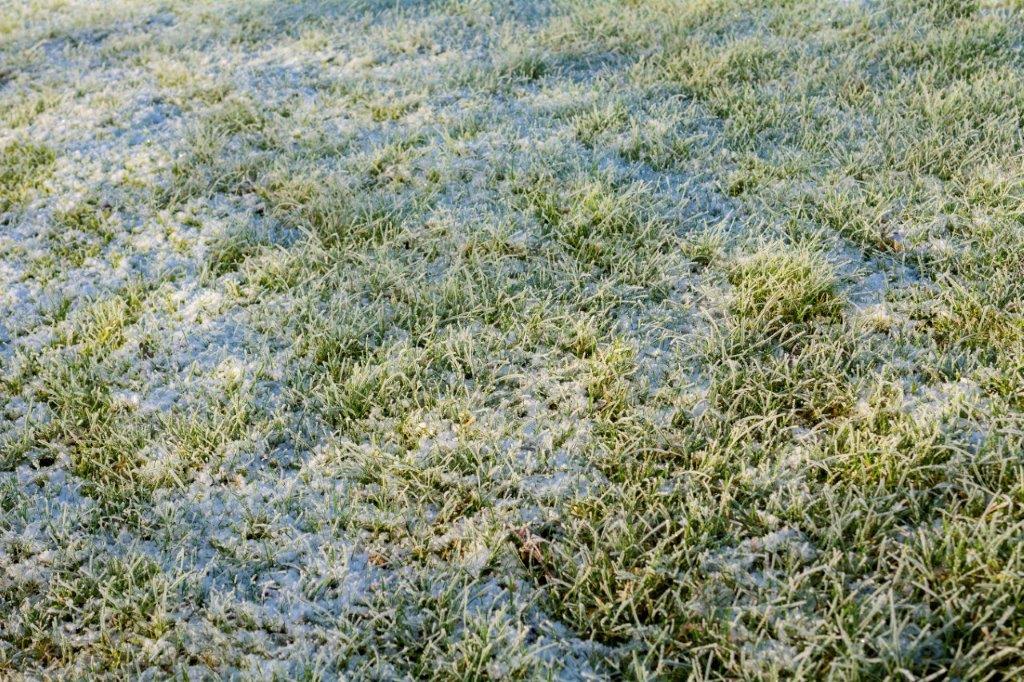The effects of frost on lawn
Author: Stefan Palm Date Posted: 31 July 2024
It's been a beautiful week with some lovely sunshine, but along with the clear nights, we saw some of the first frosts of the season. Frost is one of the significant contributors to colour loss in lawns during Winter.
When Autumn turns into Winter, it is common for some varieties of lawns to lose some colour. Colour loss can range from slight discolouration right through to total browning. The reason for this is related to the cold temperatures of Winter. The colder it is, the worse it can be. There are a number of reasons why lawns lose colour in Winter, frost being one of them, as anyone living in the frosty parts of South Australia will attest to. Frost is the freezing of dew, which typically happens in the early hours of the morning. As the dew freezes, it has the potential to freeze the lawn’s blades, leading to discolouration.
How does frost affect lawns?
Some lawns are affected more than others. Generally speaking, there are two categories of lawns in Australia: cool-season grasses like tall fescue and ryegrass and warm-season grasses, including couch, kikuyu, and buffalo. The warm-season grasses are the most common types in South Australia and also the most likely to succumb to colour loss when they are frosted.
 Cool-season grasses like ryegrass and tall fescue have a sensational ability to stay green in Winter, even under the coldest of conditions. They are commonly referred to as frost-tolerant or winter-hardy. Cool-season grasses naturally germinate and grow in much cooler temperatures than warm-season grasses. Autumn, Winter and Spring are their prime growing times as they enjoy the cooler temperatures these months bring. Put simply, these grasses are in season and looking their best during the cooler months. Along with this, they have a natural defence against frost. They contain what are called IRI proteins. IRI stands for Ice re-crystallisation inhibition. It’s like an antifreeze protein that stops the leaf from freezing when exposed to frost. This enables them to hold onto their colour.
Cool-season grasses like ryegrass and tall fescue have a sensational ability to stay green in Winter, even under the coldest of conditions. They are commonly referred to as frost-tolerant or winter-hardy. Cool-season grasses naturally germinate and grow in much cooler temperatures than warm-season grasses. Autumn, Winter and Spring are their prime growing times as they enjoy the cooler temperatures these months bring. Put simply, these grasses are in season and looking their best during the cooler months. Along with this, they have a natural defence against frost. They contain what are called IRI proteins. IRI stands for Ice re-crystallisation inhibition. It’s like an antifreeze protein that stops the leaf from freezing when exposed to frost. This enables them to hold onto their colour.
Warm-season grasses, as the name suggests, prefer the warmer times of the year. When the weather consistently dips down below the mid-teens, they slow down and go into dormancy. When a lawn goes into dormancy, it doesn’t mean it automatically loses its colour, it simply means the lawn has stopped growing. The degree to which it discolours will depend on a few things, but the major player is how cold it gets. Warm-season grasses do not contain IRI proteins, which means they will freeze if it gets cold enough, and of course, when you freeze a plant, you damage its cell walls, which results in colour loss. The other interesting thing about warm-season grasses is that many of them contain anthocyanins. Anthocyanins are purple-coloured pigments that become more prominent when the lawn is in dormancy. This is particularly evident in some couches and buffaloes during the Winter. In some instances, you can actually see the runners and blades turn a deep purple.
The good news for South Australians is that frost won't kill your lawn. It will only discolour it, so in that sense, it's just a cosmetic effect. As soon as Winter turns to Spring, your lawn will awake from its dormancy and begin to grow again, re-growing the blades that have been burnt by the frost, so don’t worry too much if your lawn takes a colour hit this Winter.
What can you do about it?
There are a few things you can do to reduce the overall effects of frost, including fertilising during Autumn with a high-potassium mineral fertiliser such as Emerald Green. Fertilising won’t stop the discolouration, but it will make the lawn more cold-tolerant, and it will help it bounce back faster in the Spring. The second thing you can do if you see frost is to water it off. You'll have to be up early to do this, but by watering the lawn just after dawn, you'll instantly melt the frost meaning the lawn spends less time frozen. Spending less time frozen will reduce colour loss. If you have an automatic watering system, you can set it to come on for a few minutes in the morning if frost is forecasted.
I wouldn't be too concerned about frost. As I said earlier, it is cosmetic. While it may affect the colour of your turf, it's a temporary issue that will resolve itself come Spring. If you need any help dealing with issues with your lawn, give us a call on 8298 0555 or email us at info@paulmunnsinstantlawn.com.au
